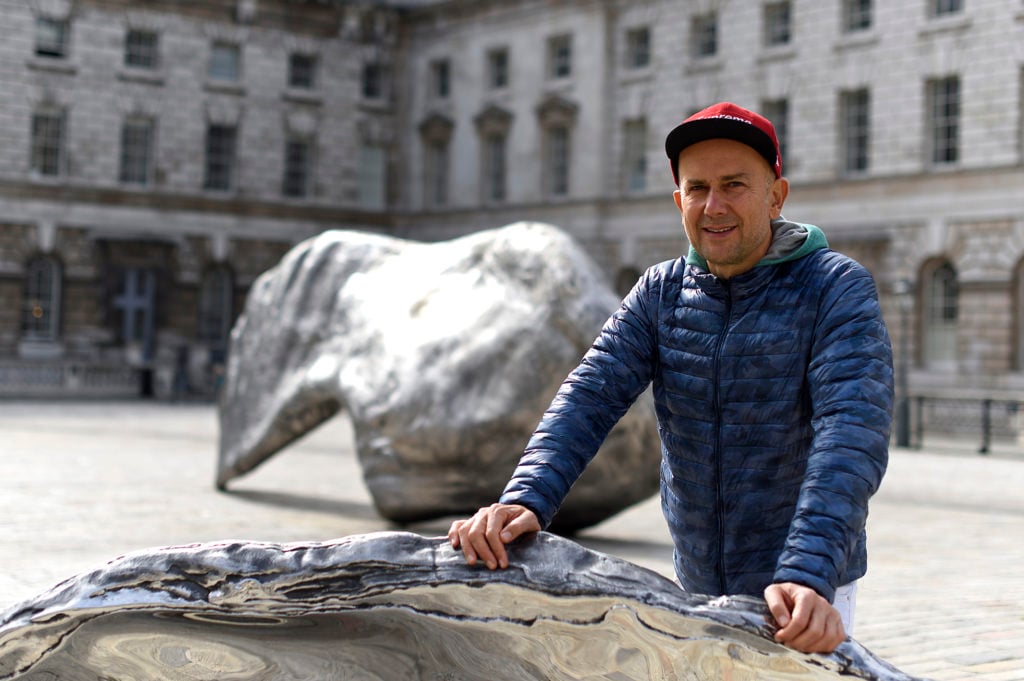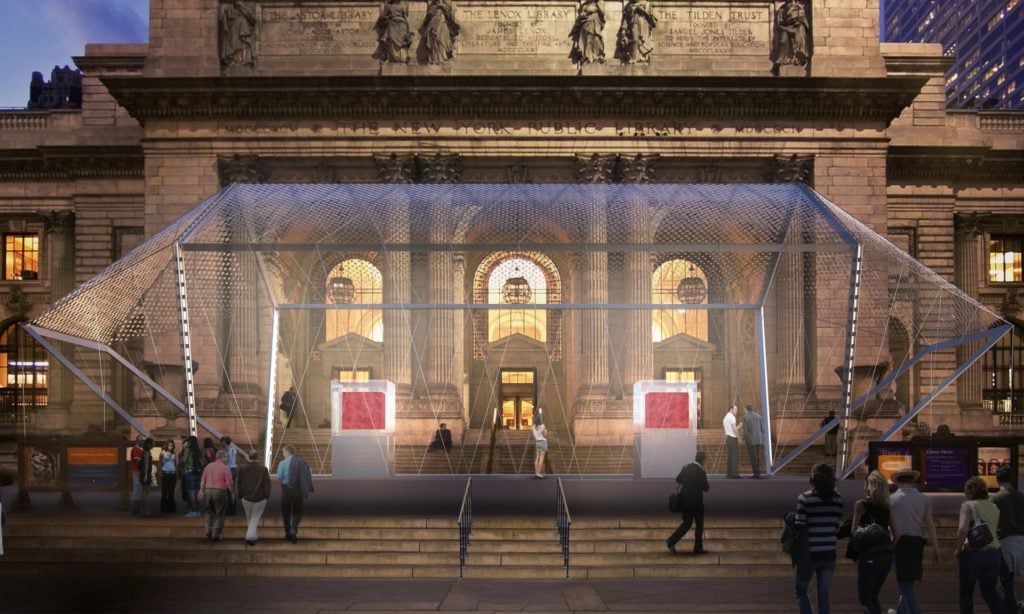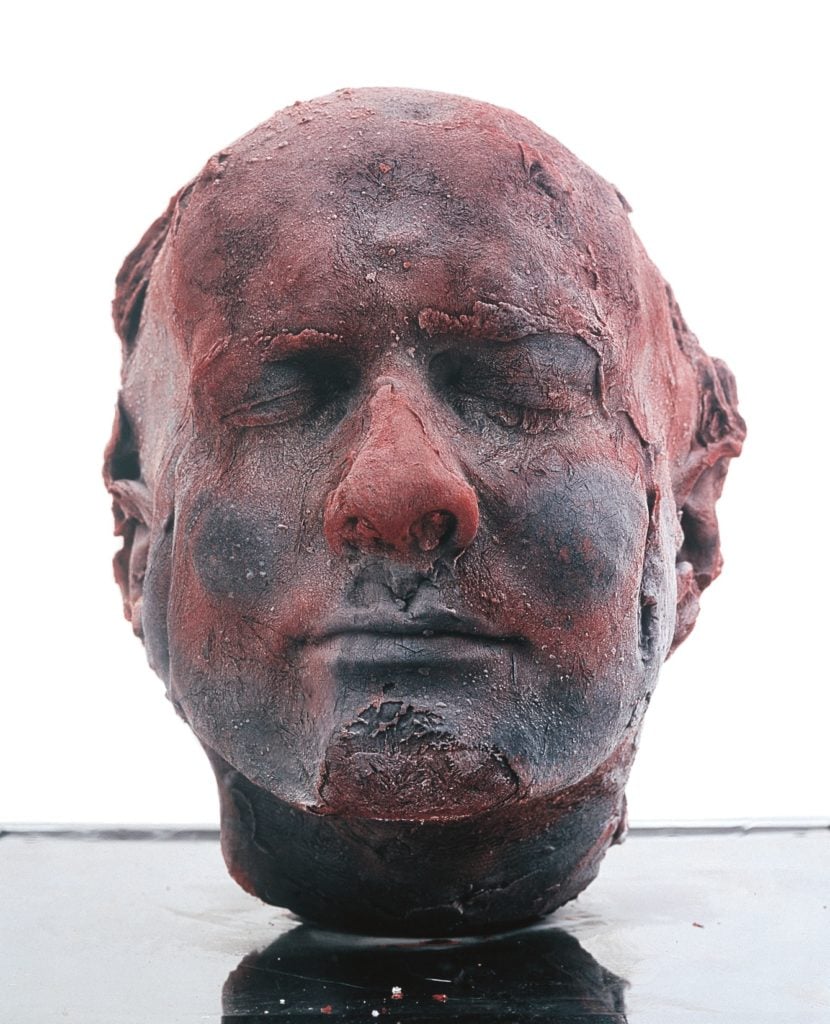Politics
Marc Quinn Will Draw Two Tons of Blood From Refugees, Kate Moss, and Others for a New Artwork to Raise Awareness About the Migrant Crisis
The British artist is making the world's first migratory sculpture to highlight the ongoing issue.

The British artist is making the world's first migratory sculpture to highlight the ongoing issue.

Sarah Cascone

British artist Marc Quinn will draw blood from at least 5,000 people for his new installation, Odyssey, set to go on display outside the New York Public Library next fall. The piece, which aims to raise awareness for the ongoing global refugee crisis, will feature two metric tons of frozen blood divided in a pair of cubes. One ton will be taken from refugees and the other from non-refugees, including celebrities like Kate Moss, Jude Law, Anna Wintour, and Paul McCartney.
“The global refugee crisis is one of the greatest humanitarian tragedies we have seen,” said Quinn, who first conceived of the piece three years ago, in a statement. “The idea for Odyssey began with the simple truth that my blood and your blood is the same; under the skin we’re all the same. Odyssey’s ultimate goal—through showing and sharing our common humanity—is to create an artwork which is social, has a lasting impact and will raise both awareness and funds for refugees. I strongly believe not only that the world remembers through art but also that art can change the world.”
Quinn plans to raise $30 million to benefit refugee-supporting organizations with the nonprofit public artwork through fundraising and art sales. Apropos to its name, Odyssey will go on an international tour following its New York debut—the artist considers it the world’s first migratory sculpture. Ahead of transport, each cube will be thawed and refrozen into smaller units in order to prevent damage and reassembled upon its arrival.
The project will also include a video component, with volunteers who contribute their blood given the opportunity to tell their own personal stories or reasons for participating. A subtitled film drawn from this footage will accompany the sculptures’ display, uplifting messages from celebrities juxtaposed with tales from those forced to flee their homes.

A rendering of Marc Quinn’s Odyssey housed in its Norman Foster-designed pavilion outside the New York Public Library. Image courtesy of Marc Quinn studio/Human Love Worldwide/Norman Foster Foundation.
Altogether, the collaborative project will involve at least 5,000 volunteers, half of them resettled refugees from around the world. The two cube sculptures will be identical, with no indication of which is which, underscoring the way in which we are all connected. The frozen blood will be displayed in bespoke refrigeration units in a pavilion designed by British architect Norman Foster with his foundation in Madrid.
“We are in the midst of a global crisis: more than 65 million people displaced after being denied the opportunity to create lives for themselves in their homelands,” said New York Public Library president Anthony W. Marx in a statement. “It is important that we call attention to this issue here in New York, a city built by waves of immigrants.”
Quinn will begin drawing blood for the project in January, setting up several small laboratories around the world. As reported by the Guardian, the artist has worked closely with medical ethics boards and a legal team to ensure the labs will meet professional standards. He is also hoping to get permission to perform DNA tests on the blood samples, to create migration maps tracing the origins of the project’s participants.

Marc Quinn, Self (1991). Photo courtesy of the artist.
The artist previously used approximately 10 pints of his own frozen blood to create his 1991 self-portrait, Self, a cast of Quinn’s head immersed in frozen silicone. He has since created a new version of the work every five years. The original piece was on view in New York earlier this year at the Met Breuer’s “Life Like: Sculpture, Color, and the Body (1300–Now).”
Half of all money raised by Odyssey will go to the International Rescue Committee. The advisory board of Quinn’s charity, Human Love, will distribute the rest to other refugee organizations and initiatives, including NYPL programming surrounding the issue.